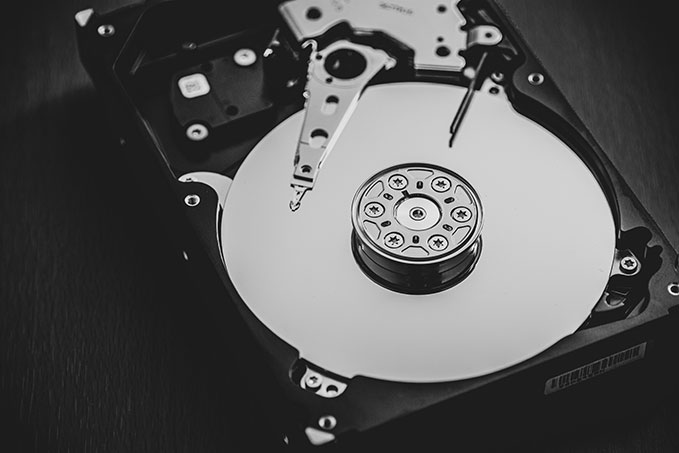Best Practices for Data Destruction to Fortify Your Cyber Security Framework
Best Practices for Data Destruction to Fortify Your Cyber Security Framework
Blog Article
How Correct Information Damage Adds To Robust Computer Security Services and Mitigates Threats of Data Violations
In today's digital landscape, the value of appropriate information devastation can not be overstated, as it functions as a basic component of extensive computer system safety and security services. By executing reliable data erasure methods, organizations not just secure sensitive information from unauthorized access but likewise boost their conformity with regulative frameworks - data destruction. The ramifications of inadequate data damage expand past plain conformity; they can exceptionally influence an organization's cybersecurity posture and online reputation. Recognizing these measurements increases essential inquiries concerning the methods in place and their efficiency in an age of intensifying cyber threats.
Relevance of Information Destruction
In today's electronic landscape, the value of information devastation can not be overemphasized. As companies progressively count on electronic assets, the potential threats connected with information breaches and unapproved access enhance. Reliable information destruction is a crucial part of a comprehensive information protection technique, safeguarding sensitive information from falling right into the hands of destructive stars.
When data is no much longer needed, merely deleting files or formatting hard drives wants. Residual data can typically be recouped making use of easily available tools, positioning substantial dangers to both people and organizations. This highlights the requirement for durable information devastation practices that make sure all information is irretrievably removed.
Additionally, regulative compliance mandates, such as GDPR and HIPAA, highlight the obligation to protect delicate data, including its proper disposal. Non-compliance can cause extreme economic penalties and legal consequences. data destruction. Thus, integrating reliable information destruction protocols not just boosts safety however additionally fortifies a company's credibility and dependability

Approaches of Secure Information Erasure
Numerous reliable approaches of safe information erasure can be utilized to make certain that delicate info is completely eliminated from storage space devices. One widely acknowledged strategy is information overwriting, which entails replacing existing data with random patterns several times. This approach considerably decreases the possibilities of data recuperation, although it may not work against sophisticated forensic strategies.

Physical devastation is likewise a reliable strategy, where storage space devices are rendered pointless with shredding, squashing, or incineration. This approach ensures that data can not be recovered by any ways however needs cautious handling of unsafe materials.
Last but not least, specialized software program tools designed for safe and secure data erasure offer capabilities that follow different erasure requirements. These tools frequently include features like confirmation processes to validate effective information devastation.
Using these methods in combination can boost data safety and security and reduce the dangers related to data violations, guaranteeing that sensitive info is not inadvertently revealed.
Legal and Conformity Factors To Consider
The techniques employed for safe and secure data erasure not only offer to secure sensitive info but additionally needs to line up with lawful and compliance frameworks controling information security. Organizations are needed to abide by various regulations, such as the General Data Security Policy (GDPR), the Health Insurance Coverage Transportability and Responsibility Act more tips here (HIPAA), and the Payment Card Industry Data Safety And Security Requirement (PCI DSS) These laws mandate details methods for information managing and damage, making sure that personal and delicate information is irretrievably gotten rid of when no longer needed.
Failing to follow these lawful requirements can lead to significant charges, including fines and reputational damages. In addition, companies have to keep records of data destruction processes, demonstrating conformity throughout audits or examinations. This documentation not just safeguards against lawful consequences yet additionally strengthens trust with consumers and stakeholders, showcasing a dedication to data protection.
Including lawful and conformity factors to consider right into information devastation methods is important for any organization. It lessens the danger of data breaches and shows an aggressive approach to securing sensitive info, inevitably fostering a society of safety and responsibility across the organization.
Impact on Cybersecurity Stance
Efficient data destruction substantially improves an organization's cybersecurity posture by minimizing the prospective strike surface area for cyber threats. When delicate data is not properly damaged, it stays accessible to malicious actors who can exploit this information for unauthorized gain access to, identification theft, or corporate reconnaissance. By carrying out robust data devastation protocols, organizations can properly minimize the threat of information breaches and improve their total safety structure.
Moreover, the protected disposal of unnecessary or out-of-date information not just safeguards delicate info however likewise helps companies adhere to market regulations and standards. Failure to effectively destroy information can cause extreme lawful consequences and reputational damages, additional endangering an organization's cybersecurity stance.

Inevitably, prioritizing reliable data devastation is essential for promoting a robust cybersecurity posture, ensuring that companies continue to be alert versus advancing cyber dangers while shielding their vital properties and stakeholders.
Ideal Practices for Organizations
Executing ideal practices for information destruction is vital for companies intending to safeguard delicate details and alleviate cybersecurity threats. Companies need to develop a comprehensive data damage plan that details treatments and responsibilities. This policy ought to abide by appropriate laws, such as GDPR or HIPAA, guaranteeing legal conformity.
Secondly, it is important to utilize accepted data sanitization methods, consisting of information wiping, degaussing, and physical destruction, customized to the kind of information and storage tool. Employing licensed professionals for information destruction solutions boosts the integrity of these methods.
Moreover, companies must maintain a thorough supply of all data storage space gadgets, guaranteeing that all obsolete or replaced equipment undertakes devastation. Routine audits of information destruction practices can help recognize weak points and enhance compliance.
Employee training is an additional vital facet, as team needs to comprehend the relevance of data devastation and follow developed methods. Finally, companies should record all data damage activities to provide accountability and traceability, which can be invaluable during audits or in the occasion of a violation.
Final Thought

One extensively read review recognized approach is data overwriting, which entails replacing existing information with random patterns multiple times.The techniques used for safe data erasure not only serve to secure sensitive info yet also should align with lawful and compliance structures controling data security. These policies mandate specific protocols for information managing and devastation, ensuring that individual and delicate information is irretrievably erased when no longer required.
By applying robust data destruction procedures, companies can effectively reduce the danger of information violations and boost their general safety and security framework.
In final thought, correct information devastation is important for enhancing computer safety and security services and alleviating the dangers linked with data violations. - data destruction
Report this page